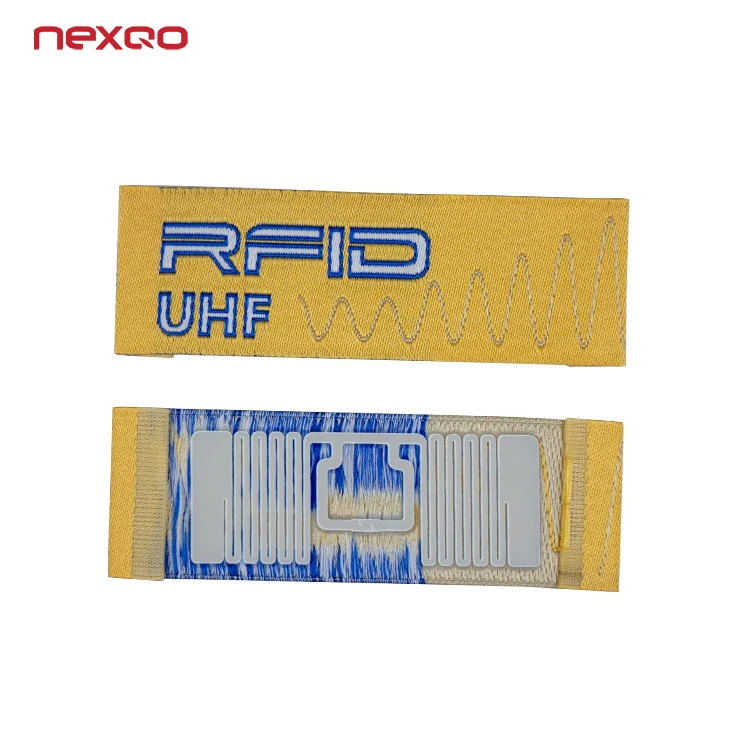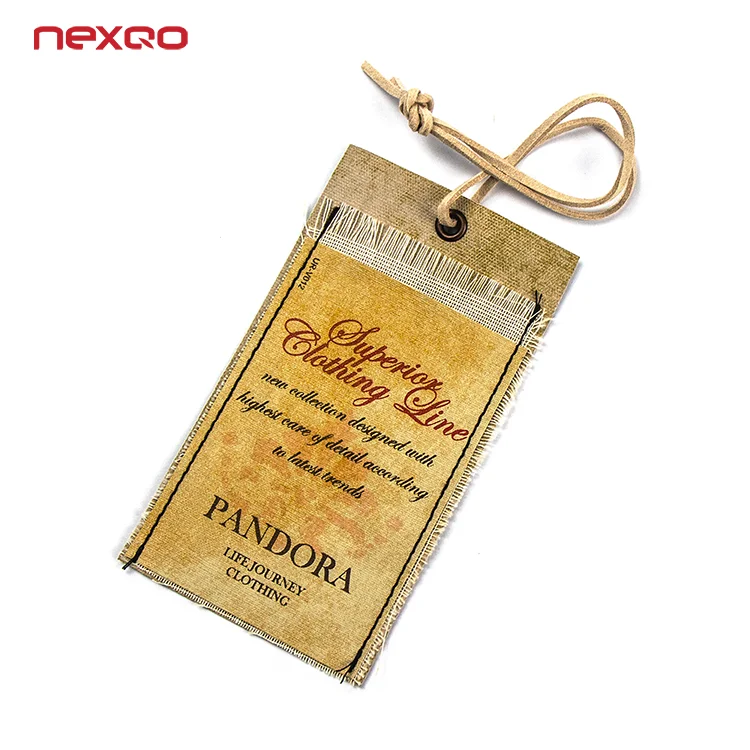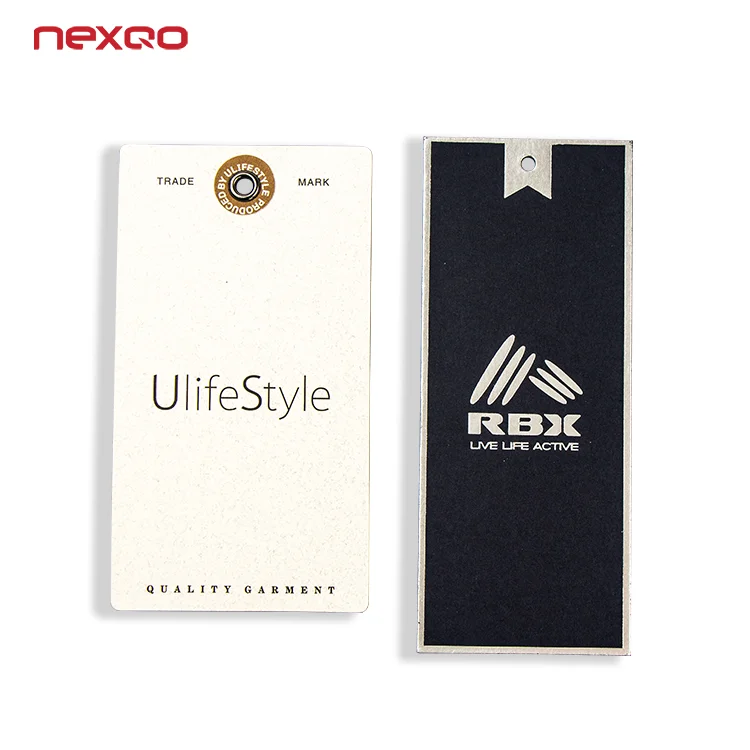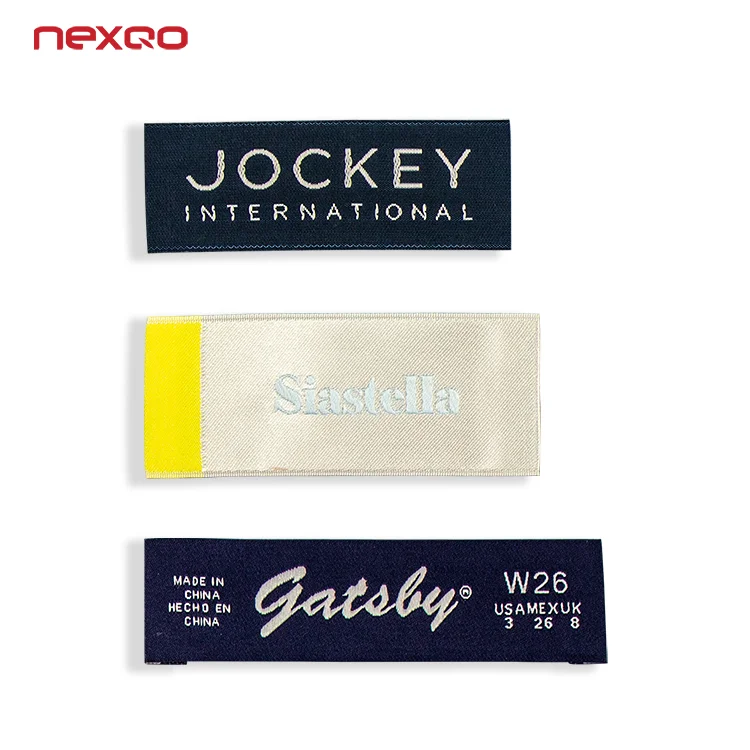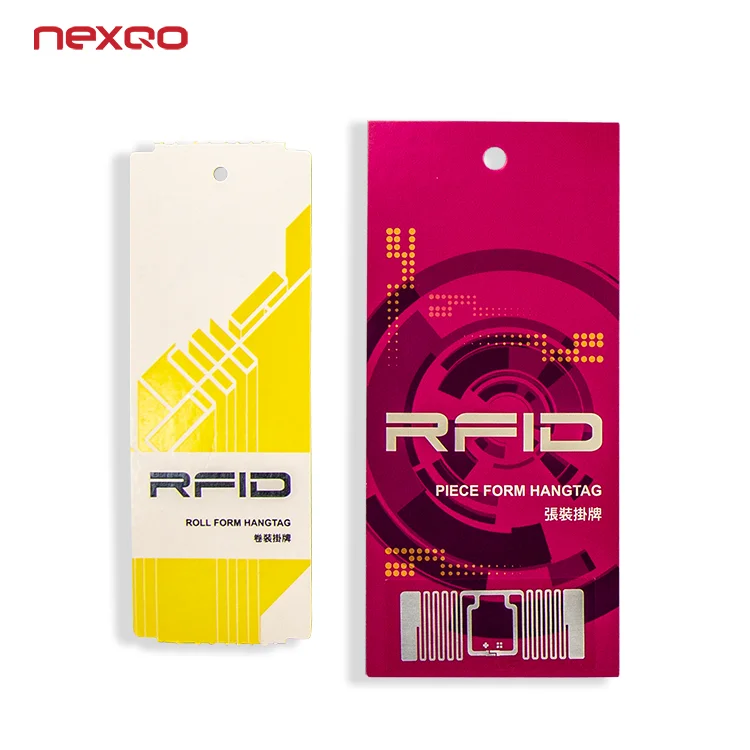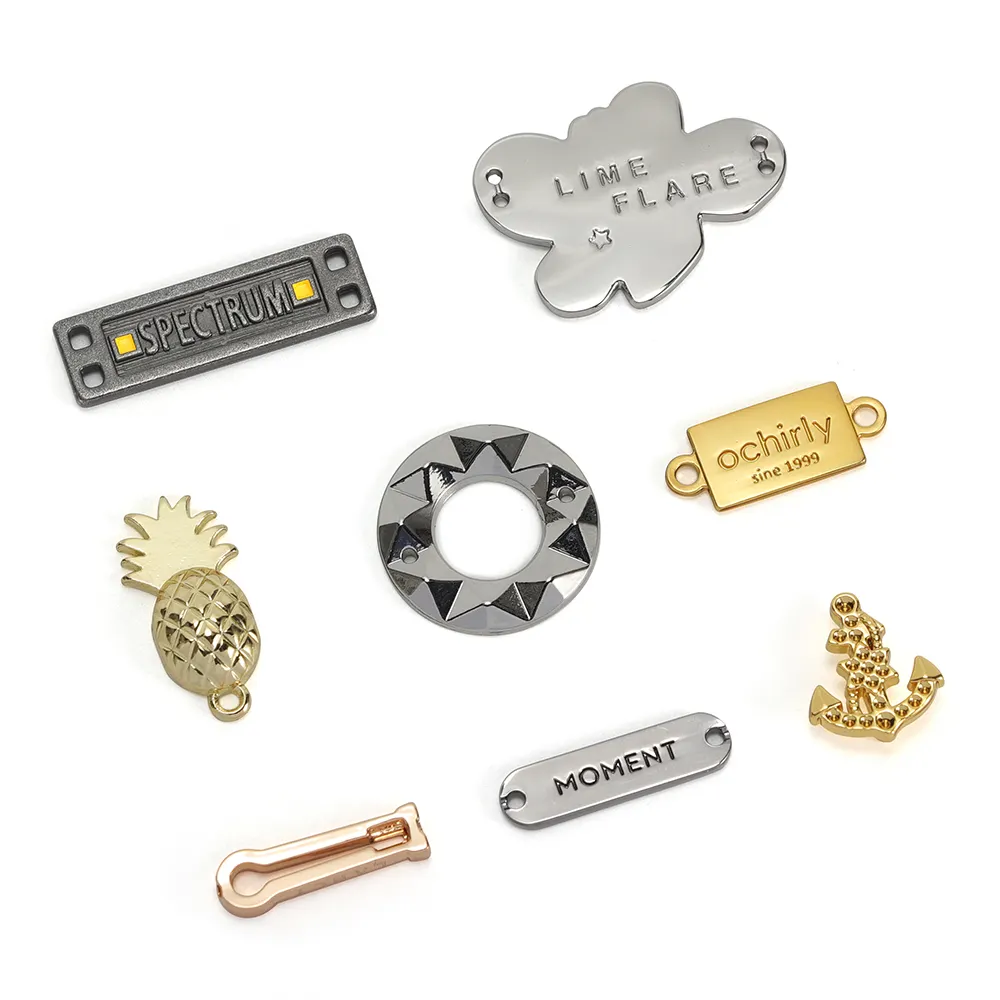Высокое качество пользовательский печатный логотип UHF RFID тканевая
- Категория: Garment Labels >>>
- Поставщик: Shenzhen,Nexqo,Smart,Card,Co.,Ltd.
Поделиться:
Описание и отзывы
Трекер стоимости
| Месяц | Минимальная цена | Макс. стоимость |
|---|---|---|
| Sep-17-2025 | 0.4 $* | 0.85 $* |
| Aug-17-2025 | 0.41 $* | 0.46 $* |
| Jul-17-2025 | 0.61 $* | 0.15 $* |
| Jun-17-2025 | 0.76 $* | 0.20 $* |
| May-17-2025 | 0.34 $* | 0.69 $* |
| Apr-17-2025 | 0.37 $* | 0.64 $* |
| Mar-17-2025 | 0.26 $* | 0.35 $* |
| Feb-17-2025 | 0.90 $* | 0.47 $* |
| Jan-17-2025 | 0.17 $* | 0.55 $* |
Характеристики
Product Paramenters

Optional Material | Woven / Paper / PVC / PET etc. |
Standard Size | Customized |
Work temperature | -20℃ - +60℃ |
Operational frequency | 860-960MHZ |
Nowadays, many clothing companies are using RFID to realize automatic management from manufacturing to retailing. Then how RFID works during the whole procedure?

Besides, each RFID chip has a unique identifier inside which cannot be changed or copied, therefore, if using an RFID tag for the product, the consumer can use this unique identifier to check whether the product they bought are authentic, then to realize anti-counterfeiting even in global market.
Nexqo provides 6 different types of RFID apparel tags, check their characteristics below and get the most suitable one for your application.
Washable (Limited Washes Only) – 4 Types
1.RFID Heat Transfer Label

RFID heat transfer label is produced under the combination of silver ink antenna with heat transfer printing technology. Patterns and characters are pre-printed on the film of the label, with using heat press machine, elegant patterns could be transferred onto the clothes’ surface under pre-set heat. The clothes and the inks would be merged as one after shaped, which will look distinctly and very beautiful.
Application:
Apparel, shoes, bedding, bags and suitcases, etc.
Advantages:
Patterns and characters could be transferred easily onto the product with a regular heat press machine;
Different sizes are available upon request;
Different colors and printings are available upon request.
Application:
Apparel, shoes, bedding, bags and suitcases, etc.
Advantages:
Patterns and characters could be transferred easily onto the product with a regular heat press machine;
Different sizes are available upon request;
Different colors and printings are available upon request.
3.RFID Woven Label (RFID Heat Transfer Label inside)

RFID woven label is produced by interweaving of different colors of thick or thin warp and woof. Woven labels give an elegant pattern, soft hand-touching and permanent unfading colors even after numerous washes. The heat transfer label is ironed to woven and then the adhered TPU film is removed.
Application:
Apparel, footwear, bedding, bags and suitcases, etc.
Advantages:
Missing labels will be greatly decreased because this woven label is directly sewed inside the product;
Soft label gives a comfortable wearing experience;
Helps to establish a high class brand image;
Enhancing market competitiveness for brands;
Strengthening consumer’s credit ability, facilitating sales promotio
Application:
Apparel, footwear, bedding, bags and suitcases, etc.
Advantages:
Missing labels will be greatly decreased because this woven label is directly sewed inside the product;
Soft label gives a comfortable wearing experience;
Helps to establish a high class brand image;
Enhancing market competitiveness for brands;
Strengthening consumer’s credit ability, facilitating sales promotio
3.RFID Nylon /Satin Label (RFID Heat Transfer Label Inside)

Embedding an RFID heat transfer label inside the nylon tapes or polyester ribbons, which made it an RFID nylon label.
The soft texture fulfils the basic washing requirements for apparels. Its characteristic lies in the possibility of direct adherence after ironing of the RFID heat transfer label onto fabric surface and becomes part of the textile material and difficult to be peeled off.
Application:
Apparel, footwear, bedding, bags and suitcases, etc.
Advantages:
Missing labels will be greatly decreased because this satin label is directly sewed inside the product;
Exclusive development technology that is highly difficult to be copied;
Multiple printing methods and personalized printing are available;
Available for different effects based on various washing requirements.
The soft texture fulfils the basic washing requirements for apparels. Its characteristic lies in the possibility of direct adherence after ironing of the RFID heat transfer label onto fabric surface and becomes part of the textile material and difficult to be peeled off.
Application:
Apparel, footwear, bedding, bags and suitcases, etc.
Advantages:
Missing labels will be greatly decreased because this satin label is directly sewed inside the product;
Exclusive development technology that is highly difficult to be copied;
Multiple printing methods and personalized printing are available;
Available for different effects based on various washing requirements.
4.RFID Converting Label (RFID Inlay Inside)

RFID converting labels are usually found in pocket labels, ribbon or nylon tape sandwich converting labels. Generally, it’s laminating an RFID wet inlay with different tapes, and then go through the ultrasonic cut or cold cut process to form the final label. Material of the tape for sandwich converting label could be ribbon, nylon tape, polyester tape, woven edge ribbon, pearlescent ribbon, etc.
Roll form or single piece form are both available; for pocket label, the only material base can be ribbon in single piece form.
Application:
Apparel, bedding, bags and suitcases, etc.
Advantages:
Lower cost due to the wet inlay processing;
Wide application with little limitations, customized printing available;
Provides flexibilities to customers for printing and encoding on roll form sandwich converting labels.
Roll form or single piece form are both available; for pocket label, the only material base can be ribbon in single piece form.
Application:
Apparel, bedding, bags and suitcases, etc.
Advantages:
Lower cost due to the wet inlay processing;
Wide application with little limitations, customized printing available;
Provides flexibilities to customers for printing and encoding on roll form sandwich converting labels.
Unwashable – 2 types
1.RFID Sticker

RFID sticker is widely used in apparel and other industries as packaging label. It’s formed from numerous types of basic materials like paper, thin plastic film or other special materials with adhesive on back and silicon protection paper as backing paper. Because of the adhesive on back, it can be adhered on commodities directly like size tag of apparels or the packing polybags.
Application:
Apparel, footwear, bedding, bags and suitcases, packaging sticker of master cartons for other industries.
Advantages:
Multiple base materials available, such as coated paper, gloss paper, art paper, PET sticker, PVC sticker, etc.;
Customized antennas are available upon request;
Customized printing artworks are available;
Personalized printing or encoding are available;
High tolerance to heat and moisture.
Application:
Apparel, footwear, bedding, bags and suitcases, packaging sticker of master cartons for other industries.
Advantages:
Multiple base materials available, such as coated paper, gloss paper, art paper, PET sticker, PVC sticker, etc.;
Customized antennas are available upon request;
Customized printing artworks are available;
Personalized printing or encoding are available;
High tolerance to heat and moisture.
2.RFID hangtag
A - Roll form
A - Roll form

RFID handtags are mainly made by paper with RFID inlay embedded in the middle. Roll handtags are normally printed with Flexo printing, which can be shown up with rich and beautiful colors on composition.
Application:
RFID apparel system.
Advantages:
Personalized information such as logo, brand, size, style number, barcode, etc. are available for printing with an RFID digital printer;
Lower cost due to easier production procedure;
Widely used in the market since some customers need to print and encode the tags by themselves.
Application:
RFID apparel system.
Advantages:
Personalized information such as logo, brand, size, style number, barcode, etc. are available for printing with an RFID digital printer;
Lower cost due to easier production procedure;
Widely used in the market since some customers need to print and encode the tags by themselves.
B – Single Piece Form

RFID handtag in single piece form, is mainly made by paper with RFID inlay embedded inside. Offset printing and digital printing are both available for this tag to present beautiful and rich colors.
Application:
RFID apparel system
Advantage:
Personalized information such as logo, brand, size, style number, barcode, etc. are available for printing with an RFID digital printer;
Lower cost due to easier production procedure;
Customized sizes and shapes are available upon request.
Application:
RFID apparel system
Advantage:
Personalized information such as logo, brand, size, style number, barcode, etc. are available for printing with an RFID digital printer;
Lower cost due to easier production procedure;
Customized sizes and shapes are available upon request.
Our Services
At NEXQO®, we appreciate that label scheme requirements vary enormously from job to job, which is why it is our policy to give our clients an extensive choice of card personalisation options.
Printing OPTIONS:
Barcodes, Card finishes, Card material, Card thickness, Die cuts, Embossing, Encoding, Foil stamping, Metallic, Spot UV, Scratch offs, Signature panels, Variable data, etc.
Printing OPTIONS:
Barcodes, Card finishes, Card material, Card thickness, Die cuts, Embossing, Encoding, Foil stamping, Metallic, Spot UV, Scratch offs, Signature panels, Variable data, etc.

We’d love to hear from you.
We’re passionate about providing our clients with not only a great product, but also great customer service.
We apply strategic and creative thinking to solving our clients' problems. Our end products are strategically crafted solutions that work and just look amazing.
Related Product
Company Profile

Nexqo has been one of the premier card and label maker in China simply based on two facts, that to make the best product and to maintain the best service. Those are also the principles Nexqo followed by, with annually over 150 million RFID produced and distributed into more than 50 countries worldwide.
With experienced team of industry experts, Nexqo has stood for a wide range of high-quality products from cards to RFID and NFC tags. We focus on different needs from different industries,our goal for every single project is to meet client’s satisfactions of 100%.
With experienced team of industry experts, Nexqo has stood for a wide range of high-quality products from cards to RFID and NFC tags. We focus on different needs from different industries,our goal for every single project is to meet client’s satisfactions of 100%.








To make sure cards can be delivered without any damage, Nexqo uses top standard packaging. All Paper boxes and cartons are made of
high-quality material.
For standard size (3-3/8”*2-1/8”):
Inner Box: 440*100*40mm, 500 pcs /box, 3kg
Outer Carton: 460*130*110mm, 1000 pcs/carton, 6kg
high-quality material.
For standard size (3-3/8”*2-1/8”):
Inner Box: 440*100*40mm, 500 pcs /box, 3kg
Outer Carton: 460*130*110mm, 1000 pcs/carton, 6kg
FAQ
1. What printers models are compatible with your RFID labels?
Our labels are tested to work with the following printer models:R110xi, R110xi4, R170xi, ZT410, ZT420
2. What is RFID?
RFID is an acronym for Radio Frequency Identification. It's an automatic identification method that stores and remotely retrieves data from an RFID inlay. Unlike barcodes where the information must be visible to the scanner, RFID inlays are hidden under the facestock of the label.
3. How does RFID Work?
RFID systems combine two components: an RFID inlay and an RFID reader. The RFID inlay transmits data in the form of radio waves to the reader through its antenna. The reader converts the data and interprets it.
4. What's an RFID label?
An RFID label is a label with an RFID inlay. This means you can print on them as well as attach RFID technology to packages, products, and more.
5. What are the components of an RFID label?
RFID labels are composed of an RFID inlay, antenna, facesheet, adhesive, and liner. The inlay is the hardware of the RFID
technology. It's made up of a microchip and antenna. The facesheet is the part you see, the adhesive is the tack, and the liner is what keeps your labels from sticking before you're ready to use them.
6. How are RFID labels encoded and read?
RFID labels are programmed by RFID-enabled printers, printer attachments, or RFID encoders. Special RFID readers are needed to communicate with the inlay. They send radio waves to the antenna and then pass the collected information to the computer for processing.
7. What's passive RFID?
Passive RFID doesn't have a battery. It operates by converting the RFID reader's radio waves into electricity. It's a common and economical type of RFID.
8. What does UHF mean?
UHF is an acronym for Ultra High Frequency. It refers to the frequency at which the RFID reader operates and reads the RFID labels. UHF RFID labels can be operated from farther distances and transmit data faster.
9. What are the differences between RFID labels and barcodes?
RFID labels can be read through packaging and/or at a distance whereas barcodes need to be seen to be scanned. RFID labels can be encoded with information multiple times, barcodes can only be printed on once. Overall, RFID labels offer more flexibility and specificity for tracking individual items.
Our labels are tested to work with the following printer models:R110xi, R110xi4, R170xi, ZT410, ZT420
2. What is RFID?
RFID is an acronym for Radio Frequency Identification. It's an automatic identification method that stores and remotely retrieves data from an RFID inlay. Unlike barcodes where the information must be visible to the scanner, RFID inlays are hidden under the facestock of the label.
3. How does RFID Work?
RFID systems combine two components: an RFID inlay and an RFID reader. The RFID inlay transmits data in the form of radio waves to the reader through its antenna. The reader converts the data and interprets it.
4. What's an RFID label?
An RFID label is a label with an RFID inlay. This means you can print on them as well as attach RFID technology to packages, products, and more.
5. What are the components of an RFID label?
RFID labels are composed of an RFID inlay, antenna, facesheet, adhesive, and liner. The inlay is the hardware of the RFID
technology. It's made up of a microchip and antenna. The facesheet is the part you see, the adhesive is the tack, and the liner is what keeps your labels from sticking before you're ready to use them.
6. How are RFID labels encoded and read?
RFID labels are programmed by RFID-enabled printers, printer attachments, or RFID encoders. Special RFID readers are needed to communicate with the inlay. They send radio waves to the antenna and then pass the collected information to the computer for processing.
7. What's passive RFID?
Passive RFID doesn't have a battery. It operates by converting the RFID reader's radio waves into electricity. It's a common and economical type of RFID.
8. What does UHF mean?
UHF is an acronym for Ultra High Frequency. It refers to the frequency at which the RFID reader operates and reads the RFID labels. UHF RFID labels can be operated from farther distances and transmit data faster.
9. What are the differences between RFID labels and barcodes?
RFID labels can be read through packaging and/or at a distance whereas barcodes need to be seen to be scanned. RFID labels can be encoded with information multiple times, barcodes can only be printed on once. Overall, RFID labels offer more flexibility and specificity for tracking individual items.

